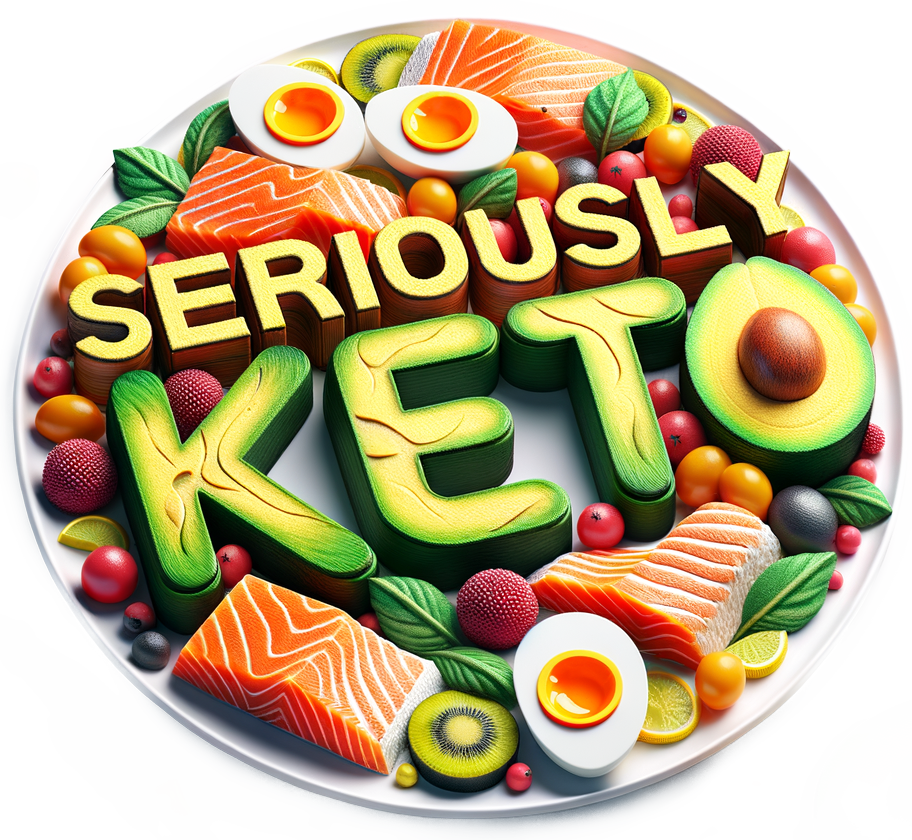You’ve probably heard people talking about the keto diet and the Atkins diet, both claiming to offer significant weight loss results. But have you ever wondered what sets them apart? While it may seem like the two are quite similar, there are some key differences between the keto diet and Atkins that you should know. In this article, we’ll explore how these two diets differ in their approach to low-carb eating and how they can impact your health and weight loss goals. So, whether you’re considering embarking on a new diet journey or just curious to understand the differences, let’s uncover the unique characteristics of the keto diet and Atkins.
Understanding the Basics of Both Diets
Definition of Keto Diet
The Keto Diet, short for ketogenic diet, is a low-carb, high-fat diet that focuses on shifting the body’s metabolism into a state of ketosis, where it burns fat for energy instead of carbohydrates. The primary goal of the keto diet is to drastically reduce carbohydrate intake and replace it with healthy fats, leading to a significant reduction in blood sugar and insulin levels.
Definition of Atkins Diet
The Atkins Diet is a low-carbohydrate diet that emphasizes consuming high amounts of protein and fat. It was developed by Dr. Robert Atkins in the 1970s and gained popularity for its focus on reducing carbohydrate intake. The diet is divided into four phases, each with varying levels of carbohydrate intake, with the ultimate aim of promoting weight loss and improving overall health.
Evolution and Popularity of Both Diets
Origin of the Keto Diet
The concept of a ketogenic diet can be traced back to the 1920s when it was initially used as a therapeutic intervention for epilepsy patients. Over time, the diet gained recognition for its potential in managing other health conditions, such as diabetes and obesity. In recent years, the keto diet has become increasingly popular in mainstream culture due to its reputation as an effective weight-loss strategy.
Rise of Atkins Diet in Popular Culture
The Atkins Diet rose to prominence in the early 2000s and became a widely known low-carbohydrate diet. Dr. Atkins based his diet plan on the principles of carbohydrate restriction to promote weight loss and control insulin levels. The diet gained popularity through various media channels and became a popular choice for individuals seeking rapid weight loss and overall health improvement.

Main Goals of Both Diets
Primary Objective of the Keto Diet
The primary objective of the keto diet is to achieve a state of ketosis, where the body burns stored fat for energy. This metabolic state is believed to offer numerous benefits, including weight loss, improved mental focus, increased energy levels, and better blood sugar control. The keto diet aims to restrict carbohydrate intake to a very low level, typically around 20-50 grams per day, to induce and sustain ketosis.
Core Aim of the Atkins Diet
The core aim of the Atkins Diet is also weight loss through carbohydrate restriction. However, unlike the keto diet, the Atkins Diet focuses on gradually reintroducing carbohydrates in controlled amounts as an individual progresses through different phases. The initial phases of the Atkins Diet are more restrictive, allowing minimal carbohydrates, while later phases allow for a moderate increase in carbohydrate intake as weight loss progresses.
Dietary Restrictions and Requirements
Food Restrictions in the Keto Diet
The keto diet requires strict limitations on carbohydrate consumption to maintain ketosis. Foods that are typically restricted or minimized include grains, starchy vegetables, sugar, processed foods, and most fruits. Instead, the keto diet encourages the consumption of foods high in healthy fats, moderate amounts of protein, and low-carbohydrate vegetables.
Food Guidelines in Atkins Diet
The Atkins Diet divides foods into different categories based on their carbohydrate content. The initial phases of the diet emphasize consuming mainly protein and fats while gradually adding more carbohydrates as an individual progresses through the phases. The diet encourages the consumption of lean proteins, healthy fats, low-starch vegetables, and limited amounts of carbohydrates from sources like whole grains, fruits, and certain starchy vegetables.

Progression and Phases of the Diets
Stages in the Keto Diet
The keto diet does not have specific phases like the Atkins Diet. It is typically maintained as a long-term lifestyle approach rather than a structured plan. However, individuals may experience different stages during their adaptation to the diet, such as the initial adjustment period known as the “keto flu,” where the body transitions from using carbohydrates to using ketones as its primary fuel source.
Phases in the Atkins Diet
The Atkins Diet consists of four phases: Induction, Balancing, Fine-Tuning, and Maintenance. The first phase, Induction, is the most restrictive, allowing only 20 grams of carbohydrates per day. The subsequent phases gradually increase the carbohydrate intake, with the final Maintenance phase focusing on finding the individual’s personal carbohydrate tolerance while maintaining weight loss.
Carbohydrate Intake
Carbs Intake in the Keto Diet
The keto diet strictly limits carbohydrate intake to an average of 20-50 grams per day, depending on individual needs and goals. This low level of carbohydrate consumption is necessary to achieve and sustain ketosis. Carbohydrates mainly come from non-starchy vegetables, nuts and seeds, and small amounts from dairy products.
Carbs Quota in the Atkins Diet
The carbohydrate intake in the Atkins Diet varies based on the specific phase being followed. The initial Induction phase restricts carbohydrate intake to 20 grams per day. As an individual progresses through the phases, carbohydrate intake gradually increases, with the Maintenance phase allowing a higher carbohydrate quota, typically around 40-60 grams per day.

Protein and Fat Consumption
Role and Amount of Protein in Keto Diet
Protein plays a significant role in the keto diet as a moderate intake is essential for maintaining muscle mass and supporting various bodily functions. The recommended protein intake on the keto diet typically falls between 20-25% of total calories consumed. It is important to choose lean sources of protein to avoid excessive saturated fat intake.
Importance and Quantity of Fats in Atkins Diet
The Atkins Diet emphasizes the consumption of healthy fats as a primary source of energy. Fats are considered essential for overall satiety, hormone production, and vitamin absorption. While there are no specific guidelines on fat intake, the diet encourages choosing healthy fats such as avocados, olive oil, nuts, and fatty fish.
Health Benefits and Risks
Health Advantages of the Keto Diet
The keto diet has been associated with several health benefits beyond weight loss. These include improved blood sugar control, reduced inflammation, increased mental clarity, enhanced triglyceride levels, and potential benefits for certain neurological conditions such as epilepsy and Alzheimer’s disease. However, it is important to note that the long-term effects of the diet are still being researched.
Potential Risks of the Keto Diet
The keto diet may carry certain risks, especially when followed inappropriately or for extended periods. Some potential risks include nutrient deficiencies, keto flu symptoms, gastrointestinal issues, and the potential impact on heart health due to high intake of saturated fats. It is crucial to consult with a healthcare professional before starting any restrictive diet.
Health Benefits of the Atkins Diet
The Atkins Diet has been associated with weight loss and improvements in various health markers, such as blood sugar levels, cholesterol levels, and blood pressure. The increased protein and fat intake may also promote satiety and help control cravings. However, it is worth noting that some studies suggest a potential negative impact on long-term cardiovascular health due to high saturated fat intake.
Potential Dangers of the Atkins Diet
While the Atkins Diet can lead to weight loss and improved health markers in the short term, there are potential dangers associated with its long-term adherence. The high intake of saturated fats and limited fiber from carbohydrates may increase the risk of heart disease, constipation, and nutrient deficiencies. It is important to approach the diet with caution and consult with a healthcare professional.
Weight Loss and Maintenance
Weight Loss on the Keto Diet
The keto diet is known for its potential to promote rapid weight loss, particularly in the initial weeks. This can be attributed to the significant reduction in carbohydrate intake, leading to a decrease in stored glycogen and water weight. However, sustainable weight loss on the keto diet may require a combination of calorie control, balanced macronutrient intake, and long-term commitment.
Weight Management on Atkins Diet
The Atkins Diet aims to facilitate weight loss and provide a framework for weight management. By gradually reintroducing carbohydrates based on individual tolerance, the diet aims to help individuals find a sustainable eating plan for long-term weight management. However, maintaining weight loss on the Atkins Diet requires a balanced approach with portion control and continued attention to overall calorie intake.
Practicality and Sustainability of Both Diets
Ease of Follow-through in Keto Diet
The keto diet can be challenging to follow initially due to its strict restrictions on carbohydrates. Adjusting to a low-carb, high-fat lifestyle may require planning and preparation, as well as careful attention to food choices. However, with proper guidance, meal planning, and a variety of keto-friendly recipes and resources available, the diet can be followed successfully in the long term.
Sustainability and Long-term Effects of Atkins Diet
The Atkins Diet offers more flexibility in terms of gradually reintroducing carbohydrates as an individual progresses through the phases. This can make the diet more sustainable for some individuals as it allows for a wider variety of food choices. However, the long-term effects may vary, and it is important to focus on overall dietary quality, portion control, and a balanced approach to nutrition beyond just carbohydrate intake.
In conclusion, while both the keto diet and the Atkins Diet have similarities in their focus on carbohydrate restriction and promoting weight loss, there are significant differences in their approaches, phases, and long-term sustainability. It is essential to consider individual preferences, health goals, and consult with a healthcare professional before embarking on any specific diet plan to ensure overall well-being and success.

